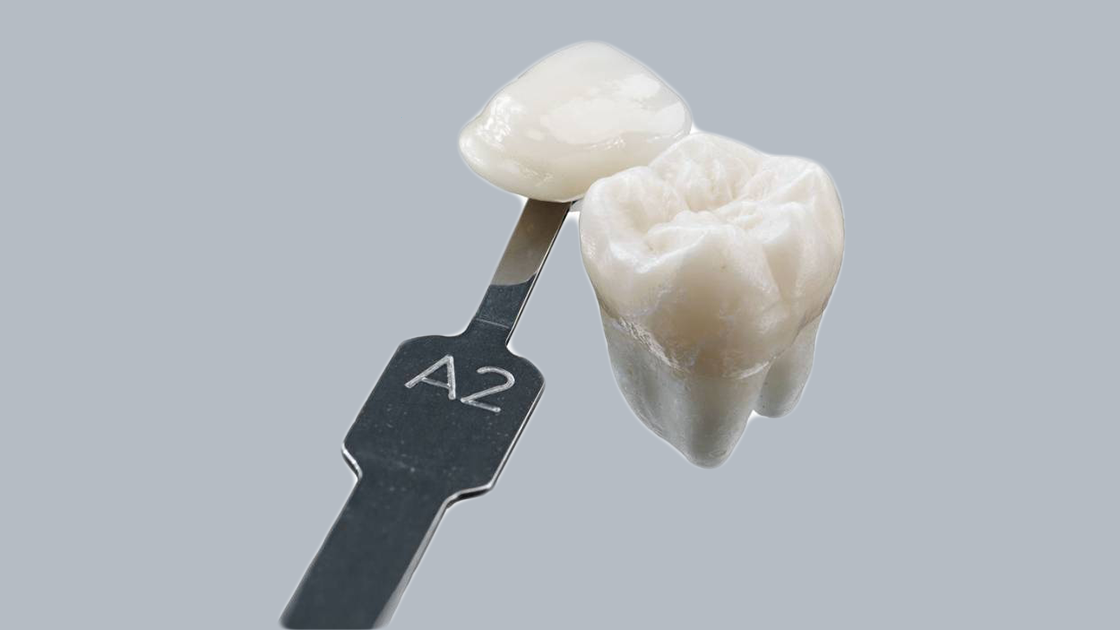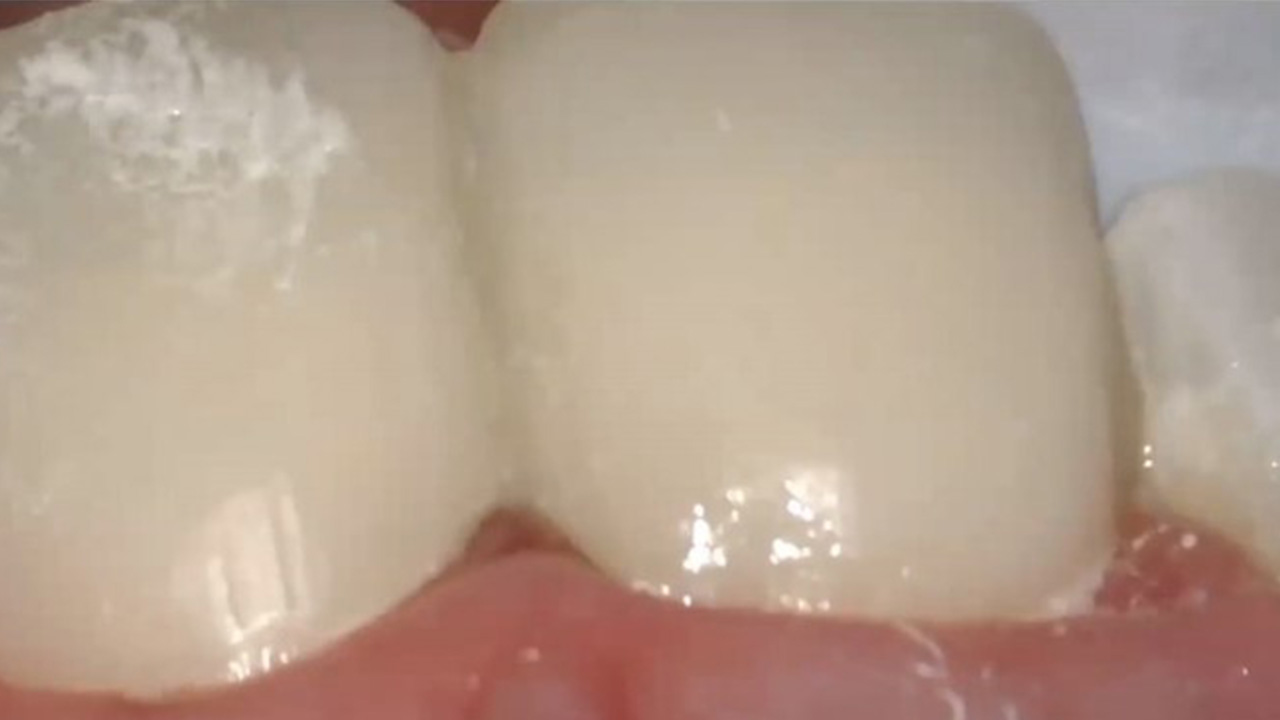Give us a call or provide your contact details below, and a Dentsply Sirona representative will be in touch soon.
Optimizing patient care and efficiency for the dental office has never been more important. Here, we’ll discuss current workflow challenges in the fabrication and delivery of single-unit crowns, common areas of inefficiency and the financial implications. We’ll also look at ways to address these challenges, create more positive experiences and grow your practice.
Current workflow challenges faced by dentists
Workflow challenges can significantly impact outcomes and the efficiency of the dental office, with a simpler workflow being cited as the most desired improvement to the workflow.1 The causes range from poor preparations to inadequate tissue management, poor impressions, fractured or lost provisionals, and cementation issues when delivering the definitive crown.
In addition, an estimated 36% of crown procedures are replacements of existing crowns,1 in part due to biological and structural failures. Marginal leakage and secondary caries, for example, may occur due to poor marginal fit of a crown, or failure to remove excess cement during crown cementation.2,3 Other biological issues that can lead to replacement of a failed restoration include irreversible pulpitis and fracture of the tooth.
Reasons for structural failures include:
- Using a crown material with insufficient strength for the clinical situation
- Insufficient clearance created while preparing the tooth or, when further occlusal reduction is not possible, failing to use a material that could be milled with a reduced wall thickness
- Selecting the incorrect cement or technique for the case (e.g., failure to use an adhesive technique or to condition the inner surface (intaglio) of CAD/CAM block materials).
Common areas of inefficiency in the Single-Unit Crown Workflow
Common sources of inefficiency in the single-unit crown workflow include impression taking and the delivery of provisional restorations.
The number one disruptor to the workflow is tissue management which is critical to obtaining an accurate final impression.1 Accurate impressions require good soft tissue management, yet 1 out of 4 dentists report they frequently encounter bleeding during the final impression procedures.1 In examining more than 1100 impressions from 3 large and 1 small dental laboratories, evaluators detected errors in 86% of them – more than half were critical errors affecting the finish line, such as impression voids, preparation margins obscured by soft tissue, or blood over the finish lines.4
Final impressions are not the only contributor to inefficiency in the single-unit crown workflow. Let’s now explore the efficiency challenges for provisionals:
- Almost 50% of clinicians indicate they are likely to run over expected procedure time when they make temporary / provisional restorations
- 92% of clinicians had a patient return in between visits due to temporary / provisional breaking off5
Financial implications of inefficiencies in the Single-Unit Crown Workflow
Inefficiency and disruptions in the dental office schedule result in an unrealized loss of revenue, unpredictability in schedules, and patient dissatisfaction.
The financial implications start to add up when the schedule is disrupted because a second impression may be needed or an additional provisional may need to be fabricated. Based on on The Levin Group Annual Dental Practice Report6 provisional crown repairs and remakes can cost an office $900 or more per month in lost production.
In looking at inefficiencies related to impressions, the financial impact can be greater. Consider the following:
- Let’s say it takes 15 minutes from start to finish to take a conventional impression (i.e., from tissue management and hemostasis, to examining the completed impression). So, how much does this cost based on production targets for a dentist? If we use a target of $4,500 per day for an 8-hour day,7 that works out to $142. That means you lose $142 each time you retake an impression.2 Obviously, the derived cost diminishes with a lower production goal, and vice versa.
- In a worst-case scenario, impression errors resulting in an ill-fitting crown can require a second laboratory-fabricated crown, introducing a second lab bill against the revenue for one crown, in addition to the extra time needed for the impression and turnaround time.
While patient care is the priority, the dental office has fixed and variable costs just like any other business.
- Fixed costs occur regardless of production – if inefficiencies cause you to perform fewer procedures, then these costs go against a lower gross revenue.
- Variable costs such as impression materials and laboratory bills vary with the number of procedures – retakes are an additional cost without any increase in procedures.
Bottom line, revenue declines and net revenue declines disproportionately more leading to reduced practice profitability. When extra visits or a crown remake are needed, cash flow can also be impacted by the increases in turnaround time.
At a time when staff shortages and staff turnover are a limiting factor for production, the impact of inefficiencies and disruption is exacerbated. All the more reason to look for ways to improve efficiency!
Digital impressions can offer efficiency compared to traditional impression as they require less time. There are other efficiencies gained with digital impressions, such as improved communication and understanding between patient and dentist when images and digital mock-ups can be seen on the screen and discussed. Together, these efficiencies can also help with case acceptance. In addition, communication and collaboration with the dental laboratory is enhanced with easy transfer of the digital scan – as well transmission at the same time of any relevant digital clinical images and other patient information. This streamlines the process. Overall, the digital workflow makes it easier to discuss a clinical case with the laboratory, and it enhances documentation.
If chairside same-day crowns are delivered, no provisional is needed – and turnaround time is reduced to the time it takes to manage soft tissue and obtain hemostasis, scan, design, manufacture, finalize and seat the crown.
Dentsply Sirona Single-Unit Crown Workflow Solution
Here at Dentsply Sirona, we want to support you with a single-unit crown workflow solution that will improve efficiency each step of the way.
Our Final Impression Solution includes soft tissue management using Hemoban™ 25% Gel Aluminum Chloride Hemostatic Solution which quickly stops bleeding precisely and efficiently, and rinses off easily with no residue. It coats and lubricates retraction cords, making packing and removing cord easier and reducing the risk of secondary bleeding. Dentsply Sirona’s Aquasil® Ultra+ Smart Wetting Impression Material formulated to help you optimize the accuracy of your conventional final impressions. This VPS material offers leading intraoral performance for both hydrophilicity and tear strength, adding an extra layer of confidence in challenging intraoral environments. Alternatively, digital impressions are fast, accurate and improve communication with the patient and the lab with Dentsply Sirona’s intraoral scanner CEREC Primescan® 2.
Our Provisional Solution includes Dentsply Sirona’s Algin-X™ Ultra, an alginate alternative that delivers predictable accuracy with dimensional stability. Our Integrity® Multi•Cure Temporary Crown & Bridge Material delivers strength where and when you need it, with on-demand light curing to allow for immediate and precise trimming. It also finishes smoothly to help maintain tissue health. Cementation of the provisional is simplified with Dentsply Sirona’s Integrity® TempGrip® Temporary Crown & Bridge Cement which is moisture tolerant, and provides for sufficient retention of the provisional yet stays in the provisional during removal, making clean-up easy.
Our CAD/CAM Restorative solution includes CEREC MTL® Zirconia, a multi-transitional layer zirconia that offers high strength (>850 MPa) and excellent esthetics. CEREC Tessera™ is also available, an advanced lithium disilicate that also offers excellent strength and esthetics for CAD/CAM restorations, whether in the laboratory or chairside. The Chairside Solution with CEREC Primemill® and CEREC SpeedFire® is designed for speed, accuracy and convenience, enabling the practice team to create and fit a restoration in just one patient visit.
Lastly, Dentsply Sirona’s Crown Cementation Solution offers efficient, and reliable cementation with easy clean-up. Calibra® Universal+ Versatile Resin Cement is a universal resin cement that can be used with or without adhesive, formulated for maximum strength and is ideal for use with glass ceramics like CEREC Tessera™ blocks or zirconia like CEREC MTL™ Zirconia blocks.
At Dentsply Sirona, we are here to support you with our entire online dental academy complete with webinars, how-to videos, and real-world examples on how to create streamlined solutions with efficient procedures and even greater patient satisfaction. Contact us now and let’s get started!
1. DIG Insights Single-Unit Crown Restorations Study. United States, Germany & China. August 2024. N=368. For more information, contact consumables-internal-data@dentsplysirona.com
2. Morphology and Bacterial Colonisation of Tooth/Ceramic Restoration Interface and Different Excess Removal Techniques. J Dent 2012;40:742-749.
3. Mitchell CA, Pintado MR, Geary L, Douglas WH, Retention of adhesive cement on the tooth surface after crown cementation. J Prosthet Dent 1999;81:668-667.
4. Rau CT, Olafsson VG, Delgado AJ, Ritter AV, Donovan T. The quality of fixed prosthodontic impressions. An assessment of crown and bridge impressions received at commercial laboratories. JADA 2017. Doi: http://dx.doi.org/10.1016/j.adaj.2017.04.038
5. Dentsply Sirona survey 2018: Indirect Procedure Survey (USA N=119 dentists / prosthodontists). For more information contact consumables-internal-data@dentsplysirona.com
6. 2013 Levin Group Annual Practice Research Report. Dental Economics, November 2013.
7. The Dental Co., CFO. Increase Dental Practice Profit by Measuring KPIs and Managing Production. Available at: https://www.thedentalcfo.com/blog/increase-dental-practice-profit-by-measuring-kpis-and-managing-production
*The material provided in this article should be used for informational purposes only and in no way should be relied upon for financial advice.








/videos/cq5dam.web.1280.720.png)
/images/sales-compass-images-/RES-image-SDR-flow-plus-upside-down-576x324.png)

